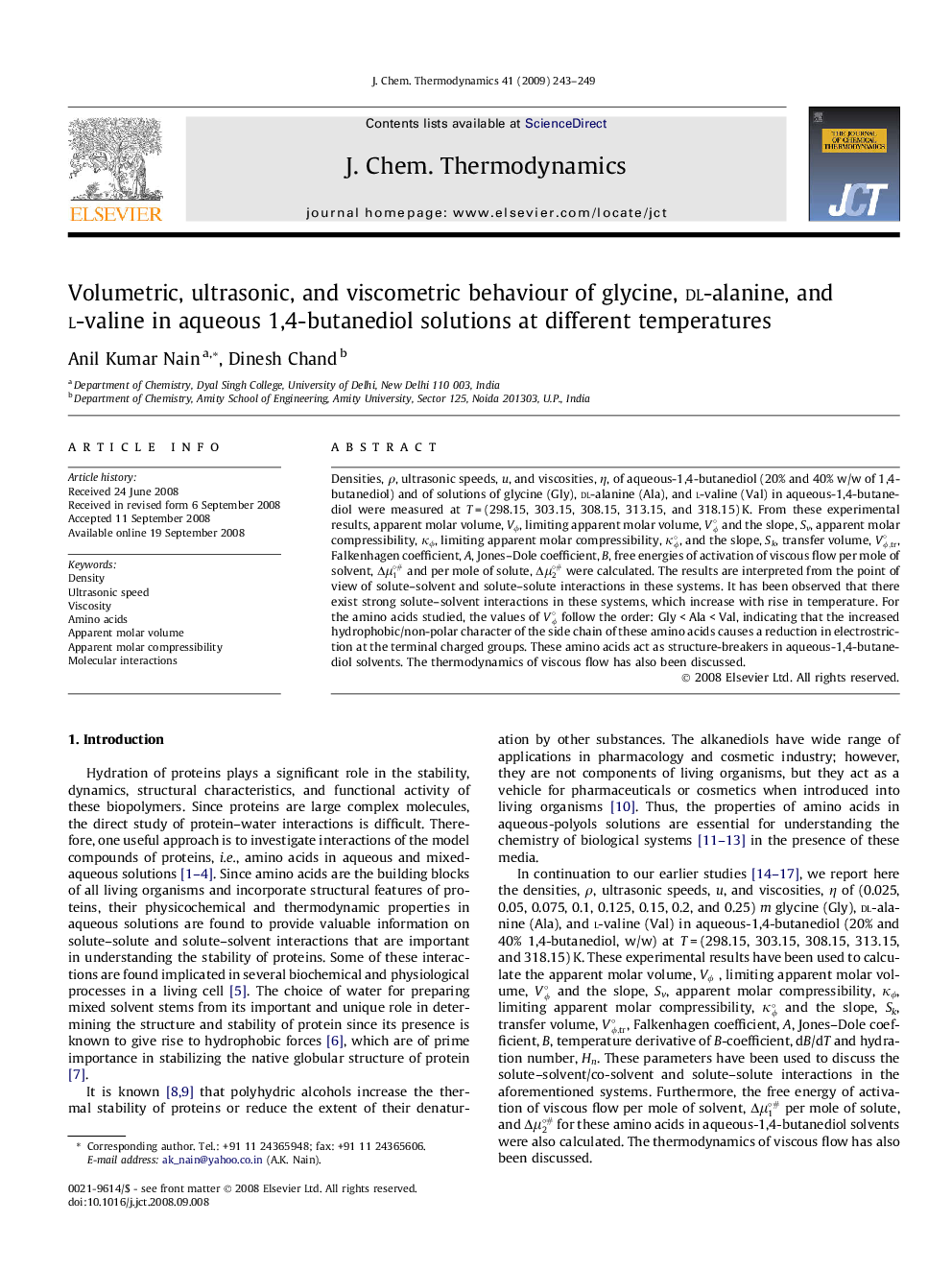| Article ID | Journal | Published Year | Pages | File Type |
|---|---|---|---|---|
| 216664 | The Journal of Chemical Thermodynamics | 2009 | 7 Pages |
Densities, ρ, ultrasonic speeds, u, and viscosities, η, of aqueous-1,4-butanediol (20% and 40% w/w of 1,4-butanediol) and of solutions of glycine (Gly), dl-alanine (Ala), and l-valine (Val) in aqueous-1,4-butanediol were measured at T = (298.15, 303.15, 308.15, 313.15, and 318.15) K. From these experimental results, apparent molar volume, Vϕ, limiting apparent molar volume, Vϕ∘ and the slope, Sv, apparent molar compressibility, κϕ, limiting apparent molar compressibility, κϕ∘, and the slope, Sk, transfer volume, Vϕ,tr∘, Falkenhagen coefficient, A, Jones–Dole coefficient, B , free energies of activation of viscous flow per mole of solvent, Δμ1∘# and per mole of solute, Δμ2∘# were calculated. The results are interpreted from the point of view of solute–solvent and solute–solute interactions in these systems. It has been observed that there exist strong solute–solvent interactions in these systems, which increase with rise in temperature. For the amino acids studied, the values of Vϕ∘ follow the order: Gly < Ala < Val, indicating that the increased hydrophobic/non-polar character of the side chain of these amino acids causes a reduction in electrostriction at the terminal charged groups. These amino acids act as structure-breakers in aqueous-1,4-butanediol solvents. The thermodynamics of viscous flow has also been discussed.
